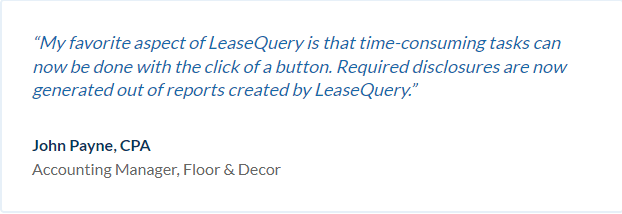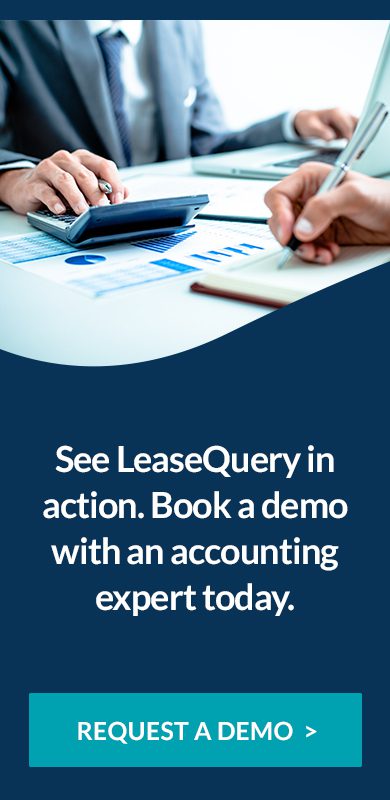For many organizations, audit season is approaching. This means this is a great time to reassess your current processes and policies for lease accounting. Your organization may have only gone through one or a couple of audits after adopting ASC 842. Post-adoption, new audit considerations should be included and most likely areas for improvement also exist for managing your leases.
Whether you need to improve your ASC 842 processes or have some complexities within your leases to account for, implementing a software solution can be beneficial.
Day 2 accounting considerations
ASC 842 compliance doesn’t end with recognizing new lease liabilities and ROU assets on the balance sheet. Leases are subject to multiple changes that can be complicated to account for. Your team must be diligent in accounting for events like renewals, amendments, terminations, or impairments accurately and promptly. Multiple nuances are part of these calculations, and oftentimes the accounting team finds out something has occurred months after the fact.
Outside of the balance sheet effects, you must maintain proper records of variable payments, such as common area maintenance, short-term leases, and subleases for footnote disclosures. In spreadsheets, you must build all of these complex calculations yourself and all of this information can become very disorganized.
Make your financial statement audits easier and more efficient
There’s no doubt that any efficiencies or improvements to the audit process make life easier. Responding to your auditors’ requests for documents and reports is a headache and they don’t like asking for new supporting files continuously.
An easy-to-use lease accounting software streamlines workflow by allowing your auditors read-only access to the system. They can pull the reports and data that they need, saving your team stress about providing the requested documentation. The software also has internal controls built into the program’s workflow, so organizations do not have to design and establish these processes themselves.

Learn more about how Shoe Sensation and McLeod Health saved time for both their teams and their auditors by automating ASC 842 compliance with LeaseQuery.
Beyond compliance
Most accounting software provides benefits beyond compliance. Many organizations are leasing a substantial number of assets, resulting in increases in their balance sheet liabilities. As a result, however, these companies now have more financial information and actionable data on their leases than ever before – all accessible and conveniently stored within their lease accounting systems.
The benefits of the systems designed to help your organization account for leases under ASC 842, IFRS 16, and GASB 87 don’t stop at compliance. Implementing LeaseQuery will enable your team to work more efficiently, improve the audit process, and help you make smarter financial decisions.
LeaseQuery has done multiple projects aiming to quantify a user’s return on investment when using software instead of Excel. If your organization is evaluating whether it makes sense to automate your lease accounting, download LeaseQuery’s ROI guide to aid in your decision making process.
Improve your budgeting, forecasting, and financial decisions
How much money will you spend on your leases next year? Can you identify how much will be spent by a particular region, department, or business division? With the enormous amount of lease data that’s contained within a lease accounting system, you can get deeper insights into your lease agreements and the financial details than ever before.
You will have to do a lot of heavy lifting to complete these calculations if you’re using Excel for lease accounting. On the other hand, the custom reporting features in LeaseQuery make it easy to generate a report on any allocation or segment you choose. With this information at your fingertips, you can offer your colleagues expert advice as they enter and renew their lease agreements.
To learn more about how accounting software can help you improve your budgeting for capital assets, read our blog, “Improving Capital Budgeting Decisions Using Finance and Accounting Tools.”
Never miss a critical date or lease renewal
When the accounting department isn’t informed of lease renewals, extensions, and other key dates, it can result in overpayments, missed payments, and late fees. It’s frustrating to feel that you aren’t on top of things – it’s just that you don’t have the information you need.
More than likely, you’re relying on an internal process where the person who manages leases or contracts notifies you of the upcoming critical date, leaving a lot of room for error. LeaseQuery allows you to enter all of the important dates relevant to a lease and the system can send automated alerts before a critical date approaches so you’re informed.
Additionally, as your team has already transitioned to the new accounting standards, then you’ve likely identified leases in your portfolio your company should not renew. This might include equipment no longer being used or leases with contracts that no longer make economic sense. Setting up critical alerts for these renewal dates allows you to make sure you terminate the contracts by the appropriate timeline or have enough time to negotiate better lease contracts.
Better interdepartmental collaboration
If you’re using Excel, multiple departments in your company could be engaged in leasing agreements. Do you have a dedicated resource managing these lease contracts? Each department dealing with leases has its own interests to consider and its related challenges.
Implementing lease accounting software solves many of these challenges for your colleagues in other departments. For example, the legal department can easily pull up contracts using a search function and the facilities team can also benefit from being alerted to upcoming critical dates. When you enter a lease into LeaseQuery, you can receive alerts that notify you of any necessary documents needed to ensure journal entries are completely and accurately capturing events in the periods they occur, such as rent escalations or renewals. This enables you to request those documents from your colleagues well before you close out the month or the quarter.
A central repository provides easy access to your contracts and documents
How are you currently housing your lease documents? Are they in PDFs on a server? Does each department maintain its own? How long does it take you to find a document when you need it? Implementing a cloud-based software with a centralized lease database is a much simpler approach.
Following the implementation of your lease accounting software, you have access to all of your contracts and other lease documents from any location that has an internet connection. Searching for documents on a network drive is difficult, but the LeaseQuery system has more sophisticated functionalities that make it easier to find what you’re looking for.
Switching is easy: Don’t wait to experience these benefits
Switching from manual spreadsheets or another current solution can be a seamless process. As key information was already abstracted for the initial lease liability and ROU asset calculations at adoption, transferring the data into a software can be relatively quick. The time spent implementing lease accounting software is well worth the investment as amortization schedules, journal entries, footnote disclosures, and reports are all available with the click of a button.
Schedule a LeaseQuery Demo and free consultation today to learn more.


